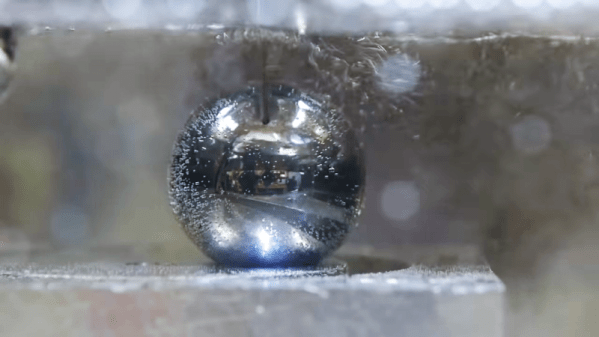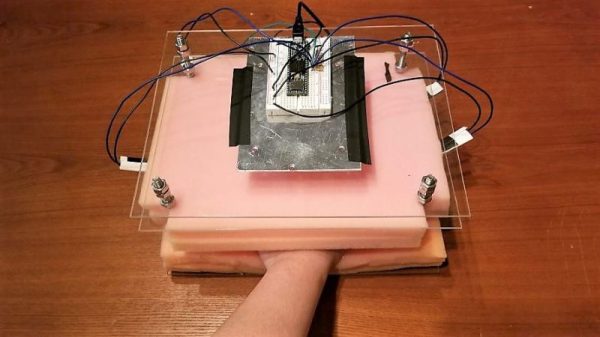Drilling holes is easy; humans have been doing it in one form or another for almost 40,000 years. Drilling really tiny holes in hard materials is more challenging, but still doable. Drilling deep, straight holes in hard materials is another thing altogether.
Luckily, these days we have electric discharge machining (EDM), a technique that opens up all kinds of possibilities. And just as luckily, [Ben Krasnow] got his hands on some EDM gear to try out, with fascinating results. As [Ben] explains, at its heart EDM is just the use of a small arc to ablate metal from a surface. The arc is precisely controlled, both its frequency via an arc controller, and its location using CNC motion control. The arc controller has always been the sticking point for home EDM, but the one [Ben] tried out, a BaxEDM BX17, is squarely aimed at the small shop market. The whole test platform that [Ben] built has a decidedly home-brew look to it, with a CNC gantry rigged up to a water tank, an EDM drill head spinning the drill rods slowly, and an airless paint gun providing high-pressure process fluid. The video below shows that it works remarkably well nonetheless.
While we’re certainly keen to see [Ben]’s promised videos on EDM milling and cutting, we doubt we’ll line up to shell out €2,950 for the arc controller he used. If you have more courage than money, this mains-powered EDM might be a better fit.
Continue reading “[Ben Krasnow] Drills Really Small Holes With Electricity”















